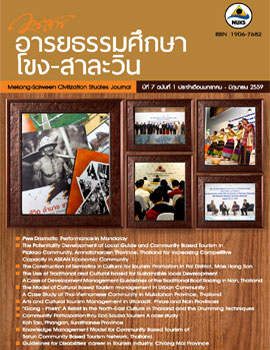Pwe Dramatic Performance in Mandalay
Main Article Content
Abstract
Pwe in Burmese language has two meanings: first meaning,
the “merit” or “merit festival;” the second meaning, public entertainment
or public festival. The word “pwe” was derived from “bun” in Pali,
as similar to bun (บุญ) in Thai language or “poy” in Northern Thai
language. In this case it means public or dramatic performances. This
qualitative study aimed at: 1) examining the pwe’s components and
its performing process; and 2) analyzing the music accompaniment
for each type of pwe. The field data were obtained through interviews
and observations with the key-informants and the performers, as well
as the audience, from the live performances in Mandalay and vicinities
between10-18, February 2015.
The results of the study showed that there are three types of
pwe: anyeint pwe, zat pwe, and nat pwe. Anyeint features a small
troupe in which the female anyeint dancer alternates her song and
dance with the comic routines of the male comedians. The zat pwe
is the all-night performance at the pagoda festival, featuring pya zat
and zat kyi, the modern drama and classical drama. The nat pwe is a
special ceremonial occasion performed at full-moon festival by
mediums, both women and men, who become representations of the
thirty-seven or more nats---the local deities- or nat wives.The music
used for all types of pwe performances are hsaing waing ensemble,
except the music for the anyeint is the combination of hsaing waing
and pop ensembles.


